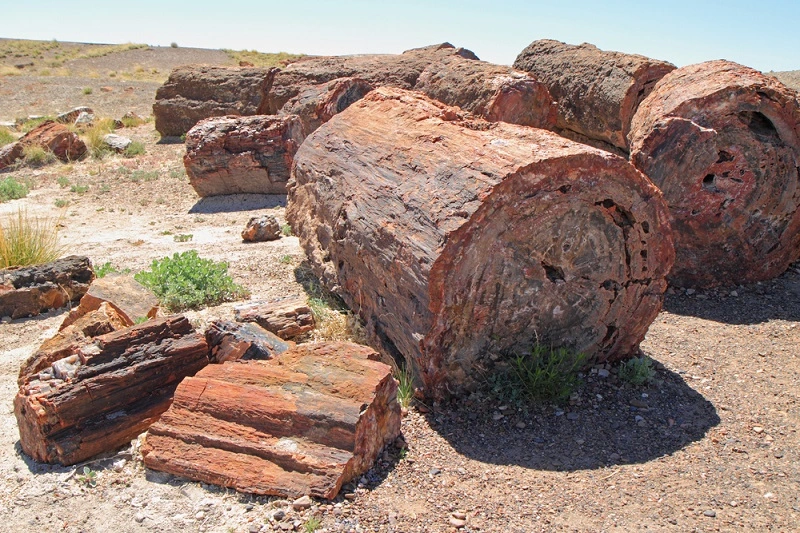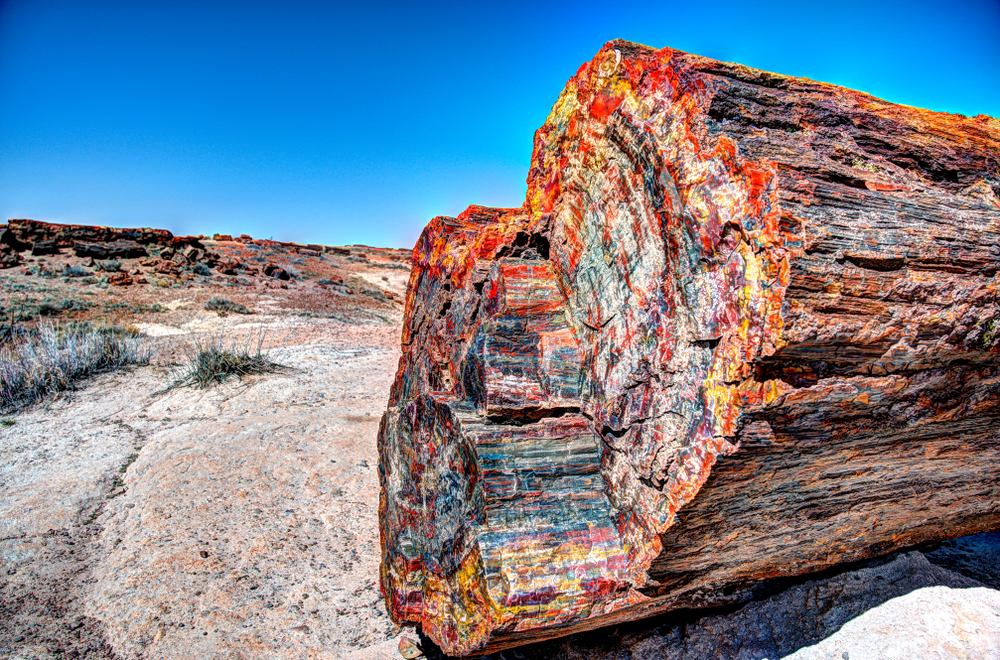Petrified wood develops into stone through permineralization throughout millions of years of geological time. Wood petrification happens when buried materials are replaced by mineral content from flowing water, which deposits silica, quartz, and calcite throughout the organic substance. The transformation process of wooden material into stone preserves the entire wood structure and the natural features of bark texture alongside cellular patterns. Stay with us and learn a deep understanding of how to identify petrified wood!
The Significance of Identifying Petrified Wood
Recognising how to identify petrified wood involves more than fossil analysis since it enables individuals to establish a connection with prehistoric times. The individual pieces deliver critical information about ancient forests, atmospheric states, and natural environments from dinosaur times. The discovery of petrified wood creates a moment of wonder for all fossil enthusiasts as if it were equivalent to finding a geological time capsule. People value petrified wood for its attractive appearance, which leads to its use in home decoration, jewellery creation, and spiritual traditions.
Look for Smooth Textures in Wood-Colored Specimens
Examine how to identify petrified wood in the sample for smooth, curvy sections that reflect the texture of bark, often with a brownish colour. Glide your fingers over these sections- if they are smooth and polished, which is a good sign of petrified wood. You may also find sap-like colours like deep red, orange, and tans around these sections. Smooth areas typically range from 3 to 5 inches (7.6 to 12.7 cm). Jagged edges may suggest where the specimen broke off from the original tree.
Hold the Piece Up to Light to Check for Transparency
Many petrified wood pieces are partially translucent, given the minerals that fill the organic structure. Hold the specimen up to a light source. If you can see light coming through the thin areas or spot the shadow of your finger behind it, that’s a good sign it is petrified wood. This effect is especially noticeable when the sections are coloured like bark, with minerals filling in gaps.
Check for Thick Portions of White in the Specimen
Seek thick, white areas in the sample, often around 1⁄2 inch (1.3 cm) in thickness. These are often remnants of dried sap from the original tree. White patches usually occur with smooth, bark-like textures accompanied by reddish, orange, or tan colours. Examine the white area for slight translucency by holding it up in light and feeling for smoothness to verify its petrified state.
Look for Circular, Grainy, and Bark-Like Patterns
Inspect the surface for natural wood patterns like growth rings, grain lines (either straight or crossed), and bark-like textures. If you can see these circular or grainy details, then it’s very likely that the cellular structure of the original wood is preserved. Comparison with growth patterns in the area from living trees may help determine whether the specimen is indeed petrified wood.
Check for Small Round Cells or Rod-Shaped Vessels
Examine the specimen under 10x to 800x magnification, starting low and increasing as needed. Look for small round cells (tracheids) or rod-shaped vessels. Conifers have small, round cells in straight lines, angiosperms have irregular vessels, and ginkgo trees have unique cell patterns similar to corn.
Examine the Thickness and Variation of the Rays
Notice the rays—long lines of small cells running from the centre to the bark. Rays can be very thin, just 1–2 cells wide, while others are of varying thickness. Mixed ray sizes are common on fruit-bearing trees, while the rays of pine trees are typically uniformly narrow.
Notice Resin Ducts Alongside Cells and Rays
Resin ducts are larger than surrounding cells and can be seen without magnification in pines, but a hand lens may be needed for other species. If resin ducts are present, the tree is likely an evergreen such as pine, spruce, or Douglas-fir. If no resin ducts are observed, the tree could be a deciduous oak or maple.
Trace Elements of Minerals: Colour
Observe the colours in the petrified wood to determine mineral traces. Black indicates carbon; blue or green suggests copper, cobalt, or chromium; yellow/blackish hues come from manganese oxides; orange/pink from manganese; and red, yellow, or brown shades from iron oxides.

Characteristics Of Petrified Wood
- Preserved Structure: Petrifaction takes the details of the wood; the original wood contains all the tiny structures as if a tree were etched into stone. It’s like holding a photo of a tree that lived millions of years ago!
- Mineralisation: Organic matters are replaced by minerals. The most common mineral ingredients are silica, calcite, and iron oxide, and the process imparts a generally striking colour to petrified wood.
- Colour Variations: Deep reds, soft browns, and vibrant greens represent the final colours of petrified wood, which comes directly from minerals that replace original wood cells. These mineral deposits can create beautiful patterns in the wood. Sometimes, this is a soft streak, but sometimes it could be bold with bright colours.
- Heavy and Solid: Although it resembles wood, petrified wood feels much heavier and harder, as it has been converted into a stone entity. A heavy sensation is one characteristic of petrified wood, along with its smooth finish.
- Texture and Surface Details: The surface is either rough or smooth. Often, it mirrors the original tree’s bark or internal grain pattern. Delicate details like the structure of wood fibres and knots can be noticed with closer observation.
- Fossilisation Evidence: Petrified wood is a natural fossil that provides information about ancient ecosystems. Its preservation provides valuable clues about the environment where the tree grew, offering a glimpse into past climates, forests, and biodiversity.
Frequently Asked Questions
Is Petrified Wood Valuable?
Yes, it’s valued for both its scientific significance and aesthetic appeal and is often used in decoration and jewellery.
How Old Is Petrified Wood?
Petrified wood can be millions of years old, often dating back to the age of dinosaurs.
Is It Legal To Collect Petrified Wood?
It depends on local laws but collection is prohibited in protected areas like national parks.
Conclusion
In conclusion, learning how to identify petrified wood is an exciting journey back in time that also helps relate to ancient ecosystems and understand a remarkable mineralisation process. Each piece of petrified wood is its unique time capsule, where an ancient tree’s structure, textures, and colours were preserved millions of years ago. Whether a fossil hunter, collector, or simply discovering the wonders of nature transformed, appreciating what petrified wood is all about can give us an idea of its geological significance and historical importance.



